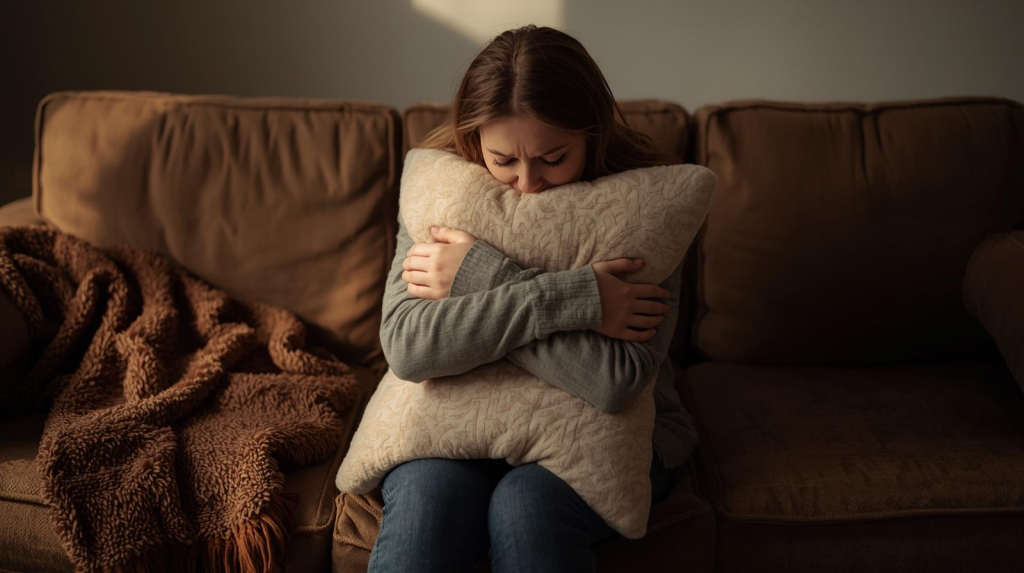
Top 5 Herbs for Menopause Relief: Evidence-Backed Natural Support
Menopause is a natural stage in a woman’s life. But symptoms like hot flashes, mood swings, and sleep problems can be hard to manage. Many women turn to natural remedies. Plus, research shows that certain herbs can ease discomfort. They also support overall well-being.
Many women experience mood swings, irritability, or sadness during menopause. For more on how herbal remedies such as St John’s Wort may support mood stabilization, see St John’s Wort: What is it and What’s it Good For?.
In this guide, we’ll explore the top five herbs for menopause. We’ll cover their proven benefits. Also, we’ll show how to use them safely.
Menopause Herbs Important Things to Know First
Before we dive in, here are key points to keep in mind:
- Results take time. Most herbs need 4-8 weeks to show full effects. But some like sage tea may help hot flashes more quickly.
- Everyone responds differently. Your genetics, symptom severity, and overall health affect how well herbs work. So what helps your friend might not help you.
- Quality matters. Look for third-party tested products or standardized extracts. This way, you get what’s on the label.
- Research is ongoing. Herbal studies often use smaller groups and shorter times than drug studies. Still, the evidence is promising.
1. Black Cohosh for Menopause
What It Is Black cohosh is a North American plant. Native Americans used it for women’s health. Plus, it’s now one of the most studied menopause herbs.
Benefits
- First, it reduces hot flashes and night sweats
- Second, it may ease mood swings and irritability
- Also, it’s backed by a 2023 review of 22 trials with over 2,300 women. The study found big drops in menopause symptoms (PubMed).
How to Take It
- Capsules, tablets, or liquid extracts
- Typical dose: 20–40 mg per day
- Timeline: Most women see results in 4-8 weeks
Safety Note: Always consult a healthcare professional first. Also, avoid if you have liver problems. Plus, stop use if you feel stomach upset.
👉 Learn more about natural menopause remedies on Homo Sapien Health.
2. Red Clover
What It Is Red clover contains plant estrogens called isoflavones. These compounds mimic estrogen in your body. So they may help replace what you’re losing during menopause.
Benefits
- First, it may reduce hot flashes
- Second, it supports bone health
- Third, it improves mood balance
- Also, a 12-week study found red clover cut menopause symptoms a lot. Plus, it worked better than fake pills (Drugs.com).
How to Take It
- Available in teas, capsules, and liquid forms
- Common dosage: 40–80 mg daily
- Best results: Take with food for better absorption
Important: Red clover may interact with blood thinners. So check with your doctor first. Also, start with lower doses to test your response.
3. Dong Quai
What It Is Dong quai is also called female ginseng. It’s been used in Chinese medicine for thousands of years. Also, practitioners often combine it with other herbs.
Benefits
- First, it may help balance hormones
- Second, it could reduce hot flashes and boost energy
- Plus, it often works better when combined with other herbs
How to Take It
- Capsules, powders, or liquid forms
- Typical dose: Around 500 mg daily
- Best approach: Use under professional guidance
Research Note: Studies on dong quai alone show mixed results. But it appears more effective in herbal blends. So consider combination formulas.
4. Sage
What It Is Sage is a common cooking herb. But it also has powerful healing properties. Plus, it’s been used for centuries to treat women’s health issues.
Benefits
- First, it’s very effective for hot flashes and sweating
- Second, it has anti-swelling effects that may support overall health
- Also, in an 8-week study, sage cut hot flashes a lot in older women (PubMed).
How to Take It
- Tea: Steep 1–2 tsp of dried leaves in hot water for 10 minutes
- Capsules: Follow package directions
- Essential oil: For smell therapy only – never eat it
Quick Relief: Sage tea may help hot flashes within days. So it’s great for fast relief while other herbs build up. Also, it tastes pleasant compared to other herbal teas.
5. Evening Primrose Oil
What It Is This oil comes from evening primrose seeds. Plus, it’s rich in GLA, a fatty acid that helps regulate hormones. Your body uses GLA to make important compounds for hormone balance.
Benefits
- First, it helps with breast tenderness
- Second, it supports mood balance
- Third, it may improve skin elasticity and moisture
- Also, research shows mixed but promising results for menopause relief
How to Take It
- Soft gel capsules or liquid oil
- Typical dose: 500–1000 mg daily
- Best timing: Take with meals to avoid stomach upset
Bonus: Evening primrose oil also supports skin health during menopause. So you get beauty benefits too. Plus, it may help with dry eyes that some women get.
How to Use These Herbs Well for Menopause
Start Smart
- Begin with one herb to see how you respond
- Start with lower doses and increase slowly
- Keep a symptom diary to track what works
- Also, take photos of products you try so you remember what worked
Combine Wisely
- Many women find herb combinations work better than single herbs
- But always tell your healthcare provider about everything you take
- Also, space out new additions by 2-3 weeks
- Plus, some herbs work better together while others may cancel each other out
Support Your Success
- Eat well: Focus on whole foods and limit sugar
- Move daily: Exercise helps with mood and sleep – Why Morning Movement transforms your day
- Manage stress: Try yoga, meditation, or deep breathing
- Sleep well: Keep your bedroom cool and dark
- Also, stay hydrated as this helps with many menopause symptoms
Important Safety Info
Menopause – Talk to Your Doctor First
This is especially important if you:
- Take hormone therapy or birth control
- Use blood thinners
- Have liver or kidney problems
- Take antidepressants or anxiety medications
- Also, mention if you’re planning surgery as some herbs affect bleeding
Watch for Interactions
- Black cohosh may affect liver function
- Red clover can increase bleeding risk
- Dong quai may interact with blood thinners
- Sage can affect blood sugar levels
- Evening primrose oil may increase seizure risk in some people
- Plus, all herbs can interact with prescription medications in unexpected ways
Quality Matters
- Look for products tested by third parties
- Choose standardized extracts when possible
- Buy from reputable companies
- Check expiration dates
- Also, store herbs in cool, dry places to maintain potency
Final Thoughts
Menopause is a natural transition. But it doesn’t have to be overwhelming. Plus, evidence suggests that black cohosh, red clover, dong quai, sage, and evening primrose oil can ease common symptoms. They can also improve your quality of life.
Remember, herbs work best as part of a complete approach. So combine them with healthy eating, regular exercise, and stress management. Also, be patient – natural remedies take time to work. Plus, consistency is key for best results.
Most importantly, every woman’s menopause journey is different. So what works for your friend might not work for you. Work with a healthcare provider who understands both conventional and natural approaches. Also, don’t be afraid to try different combinations until you find what works.
Finally, menopause is not a disease to cure but a natural life stage to navigate. But you don’t have to suffer through it. Plus, with the right natural support, many women find this time of life can be empowering and freeing.
⚠️ Important: Always speak with a healthcare provider before starting any new supplement. This is especially true if you have health conditions or take other medications. Also, stop any herb that causes side effects and tell your doctor right away.
For more science-backed natural health advice, explore expert insights from Dr. Berg, Andrew Huberman, and Dr. Mary Claire Haver on navigating menopause confidently. Plus, consider joining online support groups where women share their experiences with natural menopause remedies.
👉 Start today: Choose one herb that appeals to you most. Then, talk to your healthcare provider about adding it to your menopause support plan. Also, begin keeping a symptom diary to track your progress.

